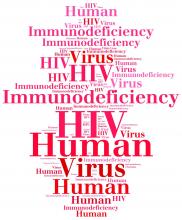Globally, new HIV infections have declined by just 18% in the past 7 years, but the decline is not quick enough to reach the United Nations’ target goal of reduced deaths and infections by 2020, according to a warning issued by UNAIDS in its July 2018 AIDS update report, Miles to Go: Closing gaps, breaking barriers, righting injustices.
“We are sounding the alarm. Entire regions are falling behind, the huge gains we made for children are not being sustained, women are still most affected, resources are still not matching political commitments, and key populations continue to be ignored,” Michel Sidibé, executive director of UNAIDS, said in a press release.
Even though almost 60% of the 36.9 million people living with HIV were on treatment in 2017, to reach the 30 million target an annual increase of 2.8 million people is required, and indications are that the rate of scale-up is slowing down, according to the report.
Currently there is a decrease in new infections at nearly half the number compared to the annual peak of 3.4 million in 1996, but the decline is not quick enough to reach the target of fewer than 500,000 new infections annually by 2020, according to UNAIDS.Not meeting the 2020 United Nations self-imposed fast-track deadline for reducing HIV infections and AIDS-related deaths by 5 years (moving it to 2025), will mean an additional 2.1 million infections and 1.0 million more AIDS-related deaths.
Part of the problem is localization of new therapies for prevention. For example, two-thirds of the estimated 350,000 people globally who have ever started pre-exposure prophylaxis (PrEP) are in the United States.
In Africa, little progress in preventing new infections has been achieved outside of the sub-Saharan region, and in eastern Europe and central Asia, the annual number of new HIV infections approximately doubled since 2000, according to the report.
Other portions of the report deal with the impact of law and politics, including the stigmatization and criminalization around the world of men who have sex with men, and the role of poverty and inequality as it affects the scope of the HIV goals, especially the problem of food insecurity, and how women and children are put at special risk by socioeconomic factors.


